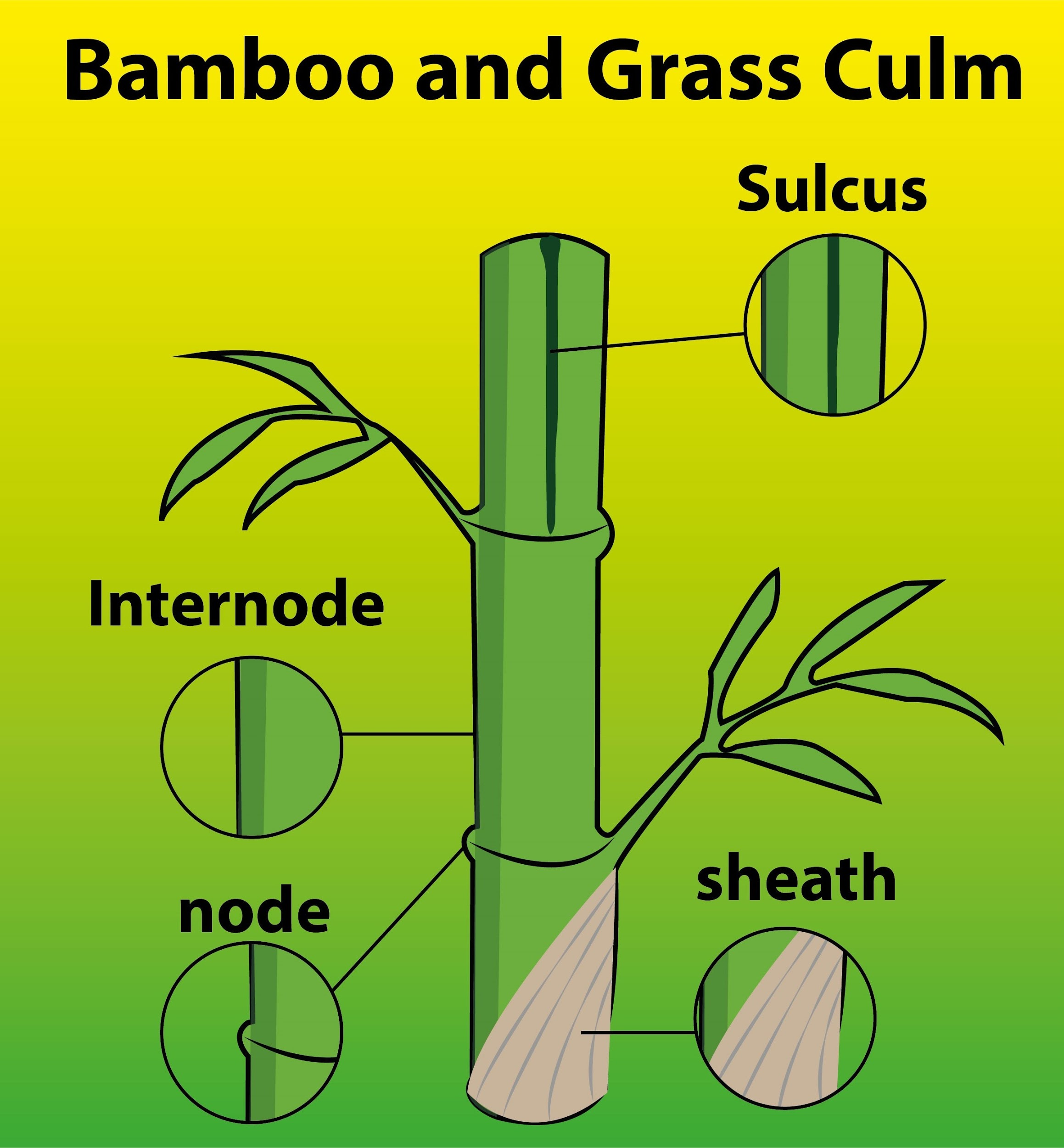
Stem is culm in
(a) Bamboo
(b) Grass
(c) Both A and B
(d) Sunflower
Answer
571.5k+ views
Hint: Stem culm is seen in the fastest growing plants on earth and others are the most common plant on the earth. This type of stem is strong and erect and hollow from inside. Culm stem is referred to as flowering and fruiting stems.
Complete step by step answer:
Bamboo and grass show the culm type of stems where it grows above the ground which is usually straight and cylinder formed or to some extent oval. The culm type of stem in grass and bamboo usually hollows inside and forms cavities. These stems have nodes or diaphragms between the two internodes that strengthen the stem. It is the strongest part.

- When bamboo is heated the culm turns black and toxic agents produced by smoke destroy the starch in bamboo making it immune to insect attack.
- Bamboo culms are painted with slaked lime, thereby prolonging their lifespan by delaying and reducing the absorption of moisture while also being repellent against insects.
- The base of the stem in these types of stems have numerous short sections with significant diameter, the adventitious root grows densely on these sections.
- Bamboo has a high silica content of the outer layer resists animal, chemical and mechanical damages which also make bamboo good fire resistance property and if it’s filled with water it can withstand up to 400- degree celsius temperature.
- Cutting bamboo or grass plants near culm and 20cm above root in 3 to 4 years old plants are suitable for propagation.
So, the correct answer is, ‘(c) both A and b.’
Note:
- The lower part in the bamboo stem is extended into the soil and connects to the rhizome and root system.
- The stem petiole is the lowest part of the bamboo and grass stem which consist of tens of short sections.
- The stem petiole is generally solid, with degenerate leaves without buds
Complete step by step answer:
Bamboo and grass show the culm type of stems where it grows above the ground which is usually straight and cylinder formed or to some extent oval. The culm type of stem in grass and bamboo usually hollows inside and forms cavities. These stems have nodes or diaphragms between the two internodes that strengthen the stem. It is the strongest part.

- When bamboo is heated the culm turns black and toxic agents produced by smoke destroy the starch in bamboo making it immune to insect attack.
- Bamboo culms are painted with slaked lime, thereby prolonging their lifespan by delaying and reducing the absorption of moisture while also being repellent against insects.
- The base of the stem in these types of stems have numerous short sections with significant diameter, the adventitious root grows densely on these sections.
- Bamboo has a high silica content of the outer layer resists animal, chemical and mechanical damages which also make bamboo good fire resistance property and if it’s filled with water it can withstand up to 400- degree celsius temperature.
- Cutting bamboo or grass plants near culm and 20cm above root in 3 to 4 years old plants are suitable for propagation.
So, the correct answer is, ‘(c) both A and b.’
Note:
- The lower part in the bamboo stem is extended into the soil and connects to the rhizome and root system.
- The stem petiole is the lowest part of the bamboo and grass stem which consist of tens of short sections.
- The stem petiole is generally solid, with degenerate leaves without buds
Recently Updated Pages
Master Class 12 Business Studies: Engaging Questions & Answers for Success

Master Class 12 Economics: Engaging Questions & Answers for Success

Master Class 12 English: Engaging Questions & Answers for Success

Master Class 12 Maths: Engaging Questions & Answers for Success

Master Class 12 Social Science: Engaging Questions & Answers for Success

Master Class 12 Chemistry: Engaging Questions & Answers for Success

Trending doubts
What is meant by exothermic and endothermic reactions class 11 chemistry CBSE

Which animal has three hearts class 11 biology CBSE

10 examples of friction in our daily life

One Metric ton is equal to kg A 10000 B 1000 C 100 class 11 physics CBSE

1 Quintal is equal to a 110 kg b 10 kg c 100kg d 1000 class 11 physics CBSE

Difference Between Prokaryotic Cells and Eukaryotic Cells




